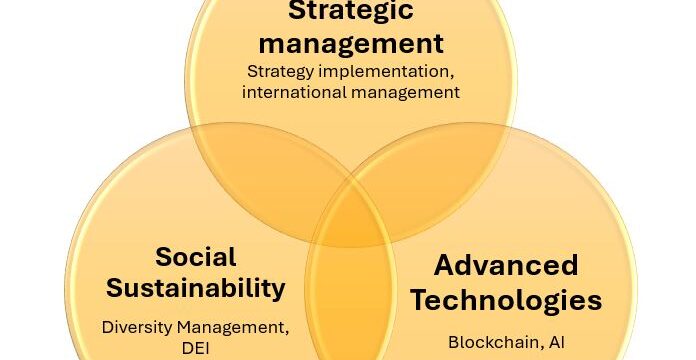Aušrinė Šilenskytė, Ph.D.
Assistant Professor of International Strategic Management (Tenure track), Strategic Business Development Research Group, School of Management, University of Vaasa, Finland
Translating strategic goals into actionable outcomes is a multifaceted challenge every manager faces. The critical role in this challenge is the human element. Because people working in organizations are diverse in many ways (by age, beliefs, education, mindset, etc.), bridging the gap between high-level corporate strategies and individual actions is difficult. The gap between the strategy and actions of people in the organization becomes even wider in culturally diverse organizations because geographical, cultural, institutional, and linguistic differences come into play.
So, how to close this gap? How to achieve that people in the organization would know its strategy and what actions in their daily work would lead to the implementation of that strategy?
First, it is essential to understand that there is no one-size-fits-all approach to strategy implementation. There are many strategy implementation frameworks, typically advocated by consultants, that are very abstract and rarely deliver results when applied in practice. Tailoring the strategy implementation process to a particular organization, its current strategy and the unique cultural contexts is essential. Managers should realize that ’the best’ strategy implementation system is the one that is optimal for their particular organization and that it may not work equally effectively for another organization due to varying organizational cultures, national environments, and strategic objectives.
Second, when designing a strategy implementation system for the organization, managers could consider employee rather than managerial thinking. Individuals join organizations expecting their personal needs and aspirations to be fulfilled. People will only hear what the organization aims to achieve and will go the extra mile to support it in implementing its strategy if they feel that this will benefit them personally (not necessarily financially). Thus, the alignment between personal goals and corporate objectives should be established to get the implementation going.
How to calibrate organizational strategic goals with the employees personal goals, in small and large firms? The alignment between the two sets of goals is established through manager-employee interactions. Personal and organizational communication practices within the firm are central to this process. The communication systems should allow gauging employees’ perspectives through surveys and conversations because only when an organization knows its people can it adjust its systems and communication strategies to ensure alignment.
When communication about the strategic goals of the organization or a firm can touch on people’s personal aspirations, a reciprocal relationship emerges: employees perceive that their aspirations are supported, and they, in turn, contribute towards the firm’s strategic goals. Communicating corporate goals in a manner that resonates with individuals’ aspirations may seem to be difficult, especially in larger firms, but it is possible. A direct link between corporate objectives and individual needs should be established. For example, it is important to explain how and why implementing this strategic corporate goal would benefit employees, their work conditions, professional development, and the possibility to learn something new or have more interesting projects.
In conclusion, firms can create effective systems that bridge the gap between strategic vision and concrete action by aligning individual aspirations with corporate goals, customizing communication strategies, and recognizing shared traits of personal aspirations across diverse contexts.
Originally published 2023 in Vaasa University Executive Education Blog.
More insights:
- Šilenskytė, A. (2020), “Corporate strategy implementation. How strategic plans become individual strategic actions across organizational levels of the MNC”, Acta Wasaensia 446. Doctoral Dissertation. University of Vaasa. https://urn.fi/URN:ISBN:978-952-476-919-8
- Video podcast on Youtube (2022) Strategy implementation clinic: Episode 1 – transition from high-level strategic goals to actions
- Video podcast on Youtube (2023) Strategy implementation clinic: Episode 2: management methods to transform strategic goals into actions



